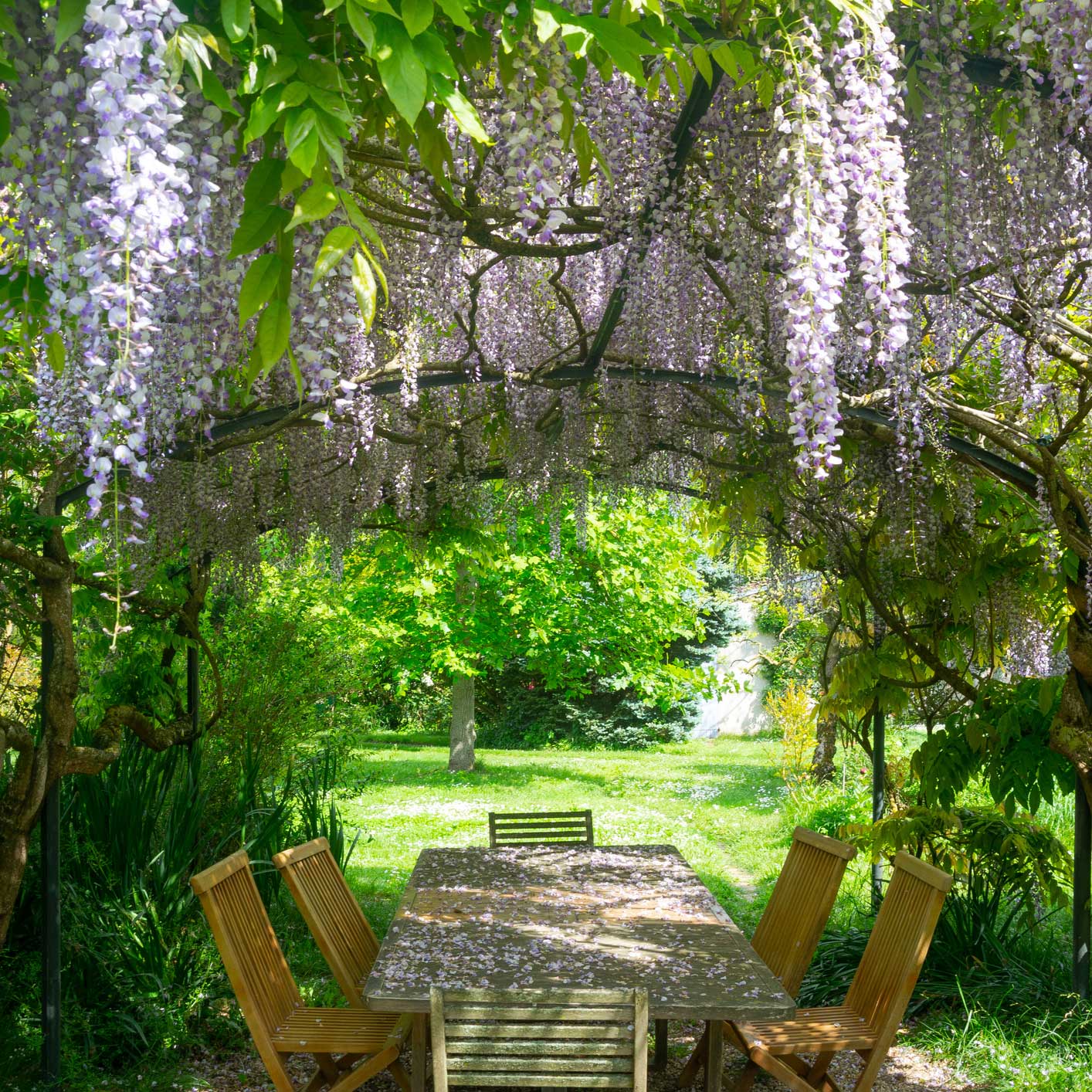Purple Wisteria
Purple Wisteria
SKU:PER-VIN-WIS-23-3G
Bring a Splash of Purple to Your Garden with Wisteria!
Imagine your garden transforming into a whimsical hideaway with cascading blooms of purple. Our Purple Wisteria plants are more than just a visual treat; they're a ticket to creating your own peaceful retreat.
Why Purple Wisteria?
- Easy to Grow: Thrives in most soil types, making it a fuss-free addition to any garden.
- Year-Round Beauty: Enjoy the lush green foliage that transitions into a vibrant display of purple in the spring.
- Vertical Charm: Perfect for pergolas or trellises, adding height and dimension to your outdoor space.
- Quick Coverage: Fast-growing vines that provide privacy and shade in no time.
Planting & Care Tips
Our Purple Wisteria is a cinch to care for. Plant it in a sunny spot, give it a bit of water, and watch it climb to new heights. A little pruning keeps it in shape and encourages more blooms. That's it – gardening made simple!
Get Yours Today!
Don't wait to add this enchanting climber to your collection. Order your Purple Wisteria now and get ready to be the envy of the neighborhood with your stunning purple paradise!


Product Details
-
Product Category
Perennials
-
Product Subcategory:
Vines
-
Botanical Name:
Wisteria Cinensis / Native Blue
-
Does Not Ship To:
AZ, OR
-
Mature Height:
Vine
-
Mature Width:
Vine
-
Growing Zone:
5-9 outdoors
-
Indoor Growing:
-
Sunlight:
Full-Part Sun
-
Growth Rate:
Moderate
-
Harvest Time:
-
Bloom Time:
Spring to Summer

Planting Directions
<h2>Planting Purple Wisteria</h2>
<p>To plant purple wisteria, choose a location with full sun to partial shade and well-draining soil. Ensure ample space for growth, as wisteria can become quite large and requires sturdy support like a trellis or arbor.</p>
<ul>
<li>Dig a hole twice as wide and just as deep as the root ball.</li>
<li>Place the wisteria in the hole, spreading out the roots gently.</li>
<li>Backfill the hole with soil, and water thoroughly.</li>
<li>Apply a layer of mulch around the base to retain moisture and regulate soil temperature.</li>
</ul>
<h2>Care and Maintenance</h2>
<p>Water newly planted wisteria regularly to establish roots. Once established, wisteria is drought-tolerant and requires less frequent watering. Prune in late winter to shape the plant and remove any unwanted growth.</p>
<h2>Fertilization</h2>
<p>Use a balanced 10-10-10 fertilizer in spring as new growth appears. Avoid high-nitrogen fertilizers, which can encourage foliage at the expense of flowers.</p>
<h2>Pollination</h2>
<p>Purple wisteria is typically pollinated by bees. To attract pollinators, avoid using pesticides and plant a variety of flowering plants nearby.</p>
<h2>Harvesting</h2>
<p>Wisteria is primarily grown for its ornamental value. If you wish to collect seeds, wait until the seed pods mature and dry on the plant before harvesting.</p>
<p>Remember, wisteria can become invasive if not managed properly, so regular pruning is essential. Enjoy your purple wisteria's stunning blooms and sweet fragrance!</p>

FAQs
<h2>FAQs for the Purple Wisteria</h2>
<h2>1. How do I plant Purple Wisteria?</h2>
<ol>
<li><strong>Choose the Right Location:</strong> Select a spot with full sun to partial shade and well-draining soil. Wisteria thrives in a sunny position to flower profusely.</li>
<li><strong>Prepare the Soil:</strong> Loosen the soil to a depth of 18-24 inches and mix in compost or well-rotted manure to enrich it.</li>
<li><strong>Planting:</strong> Dig a hole twice the diameter of the root ball and just as deep. Place the wisteria in the hole, spreading the roots gently. Fill the hole with soil, and water thoroughly.</li>
<li><strong>Support Structure:</strong> Install a sturdy trellis or support at the time of planting. Wisteria needs strong support to grow well.</li>
<li><strong>Watering:</strong> Keep the soil moist but not waterlogged during the first growing season to establish the plant.</li>
</ol>
<h2>2. How do I fertilize Purple Wisteria?</h2>
<ul>
<li><strong>Initial Fertilization:</strong> Apply a balanced fertilizer, such as 10-10-10, in the spring after planting.</li>
<li><strong>Regular Feeding:</strong> Fertilize annually in early spring with a high-phosphorus fertilizer to promote flowering.</li>
<li><strong>Avoid Over-fertilization:</strong> Too much nitrogen can encourage leaf growth at the expense of flowers. Use fertilizers sparingly.</li>
</ul>
<h2>3. How do I ensure pollination of Purple Wisteria?</h2>
<p><strong>Attract Pollinators:</strong> Wisteria is typically pollinated by bees. You can encourage bee activity by planting pollinator-friendly plants nearby. Avoid using pesticides that could harm bees and other pollinators.</p>
<h2>4. How do I prune Purple Wisteria?</h2>
<ol>
<li><strong>Initial Pruning:</strong> After planting, cut back the main stem to help encourage branching.</li>
<li><strong>Formative Pruning:</strong> In the first few years, prune to shape the plant and establish a strong framework of branches.</li>
<li><strong>Maintenance Pruning:</strong> Twice a year, in late winter and mid-summer, prune back side shoots to about 6 inches from the main branch to encourage flowering spurs.</li>
</ol>
<h2>5. How do I harvest Wisteria seeds?</h2>
<ul>
<li><strong>Wait for Seed Pods:</strong> After flowering, wisteria produces seed pods. Allow them to dry on the plant.</li>
<li><strong>Collect Seed Pods:</strong> Once the pods are brown and dry, usually in late fall, collect them before they open.</li>
<li><strong>Extract Seeds:</strong> Open the pods carefully and remove the seeds.</li>
<li><strong>Storage:</strong> Store the seeds in a cool, dry place until you are ready to plant them.</li>
</ul>
<p>Remember, patience is key with wisteria. It may take several years for new plants to start flowering, but with proper care, your wisteria can become a stunning addition to your garden.</p>



